There can be your advertisement
300x150
Repair Without Headache: 7 Modern Tips to Plan Everything and Not Forget Anything
Save and take note
Even if you have long dreamed of a renovation, the process is often exhausting: deadlines are missed, contractors let you down, budgets grow, and there's simply not enough energy or attention for everything. But the main reason for problems isn't force majeure, but rather the lack of a systematic approach. To make the repair go smoothly, it needs to be planned in advance.
We've collected tips that help avoid mistakes, record important details, and not drown in an endless stream of decisions.
Start with a detailed plan
Many begin renovation with beautiful references, but without technical data, even the most inspiring collage becomes chaos. At the first stage, you need to create a detailed apartment plan: with real measurements, placement of utilities, load-bearing walls, windows and doors. This is the base on which everything else will be built.
If you have an old plan, check its accuracy: measurements in new buildings often differ. It's better to double-check everything with a ruler or invite a measurer. Based on the data, you can plan furniture placement, plumbing, lighting points, anticipate zoning and types of finishing.
It's also important to consider the needs of residents: how many people will live there, how many outlets are needed at the workplace, how often a microwave or washing machine is used. Linking to real-life scenarios helps avoid hasty decisions like an outlet behind the bed or a missing wardrobe in the hallway.
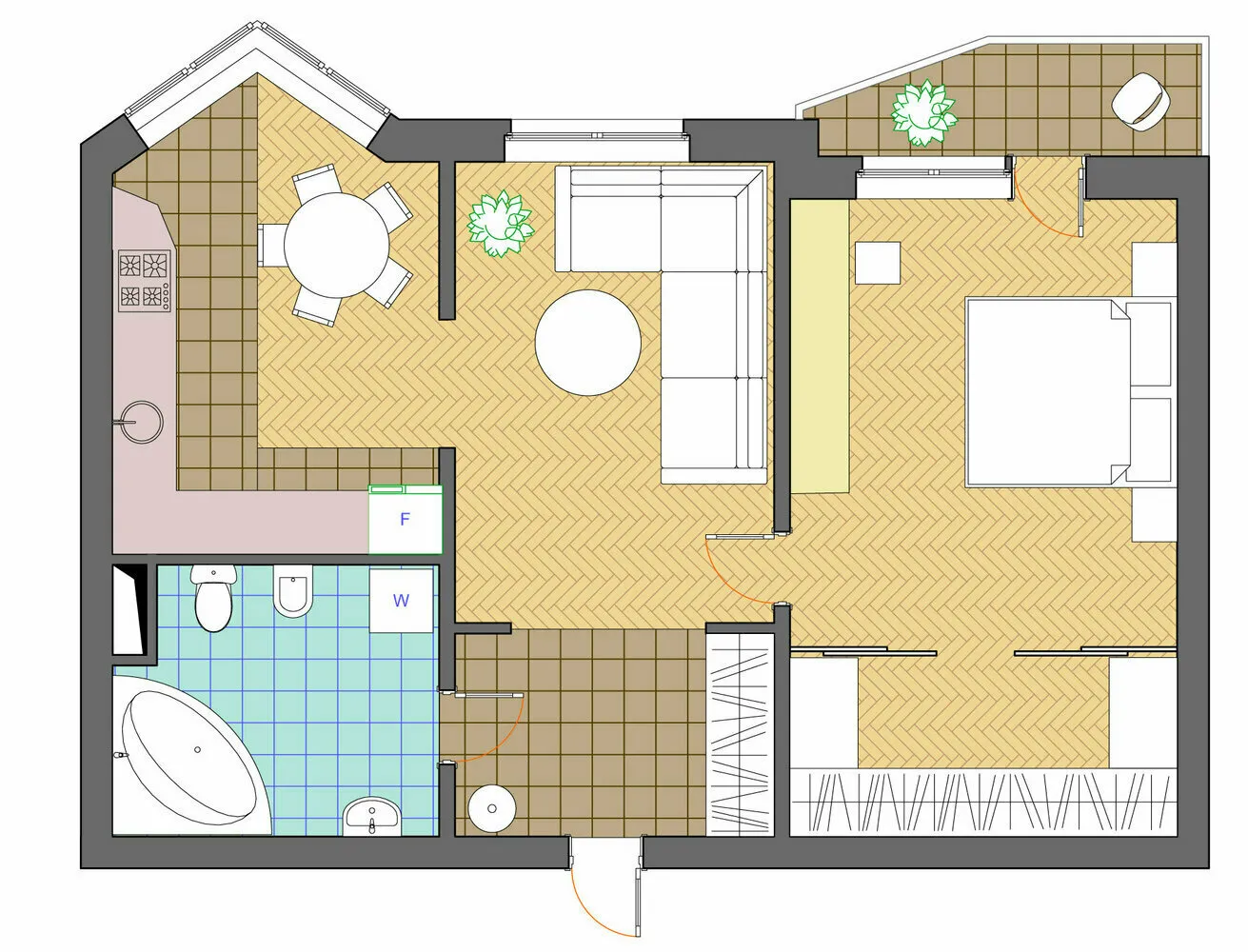 Design by Maxim Panyin
Design by Maxim PanyinMake checklists
Break down the renovation into logical stages: preparation and demolition, rough work, electrical and plumbing, finishing works, furniture and appliance installation. For each stage, create a separate task and material list so that you not only keep the process under control but also plan the budget in parts.
For example, when preparing for rough work, a checklist would include: contract with the crew, procurement of consumables (cement, plaster), waste removal, and calling in measurers. For the finishing stage — material selection, texture and color coordination, delivery schedule.
 Design by Dasha Titova
Design by Dasha TitovaUse digital tools
Planning a renovation in phone notes is still like drawing a plan on a napkin. Modern apps make the process many times easier: they track expenses, remind you of tasks, store documents, and help visualize the interior.
- Finance — CoinKeeper, Zen-Money
- Tasks and Schedule — Trello, Todoist
- Design — Planner 5D, Room Planner
If you don't want to use dozens of services, there's one universal assistant
In today’s world, technologies are increasingly penetrating our lives, and even such a creative process as renovation is not left out. Neural networks can ease the solution of many tasks related to design and construction. For example, the YandexGPT 5 Pro model in the chat with the Alice AI assistant can help solve even complex problems. For instance, if you're planning to make an accent wall in the bedroom but worry it might look too bright, Alice will suggest how to approach color choice, materials, and other factors to consider.

Alice AI is available to everyone for free. It works without VPN in Russian. Another useful feature of Alice is the ability to explain complex construction terms in simple language. No more guessing what a “crane box,” “light,” or “heat pipe” means — the neural network will quickly and clearly explain their meaning and answer any follow-up questions.
Besides, Alice can generate images, which allows you to visualize different interior styles. The neural network opens new horizons in interior design, serving as a reliable assistant for those who want to create a unique space or find inspiration. With Alice, you can get advice on color and material combinations, try out different styles and furniture layouts.
Don't forget about hidden works
One of the most common mistakes is not documenting hidden works. While everything is covered with gypsum board or tiles, you don’t think about it. But when a pipe leaks or the power goes off in part of the apartment after six months, it’s impossible to prove anything without photos or diagrams.
Immediately agree with the crew that before closing all utilities, you will receive detailed photos. Take pictures:
- air conditioning and ventilation routes
- wiring and junction boxes
- plumbing layout and connection points
- underfloor heating, if present
Store the photos in the cloud or link them to the apartment plan. If desired, add explanations of where everything is laid.
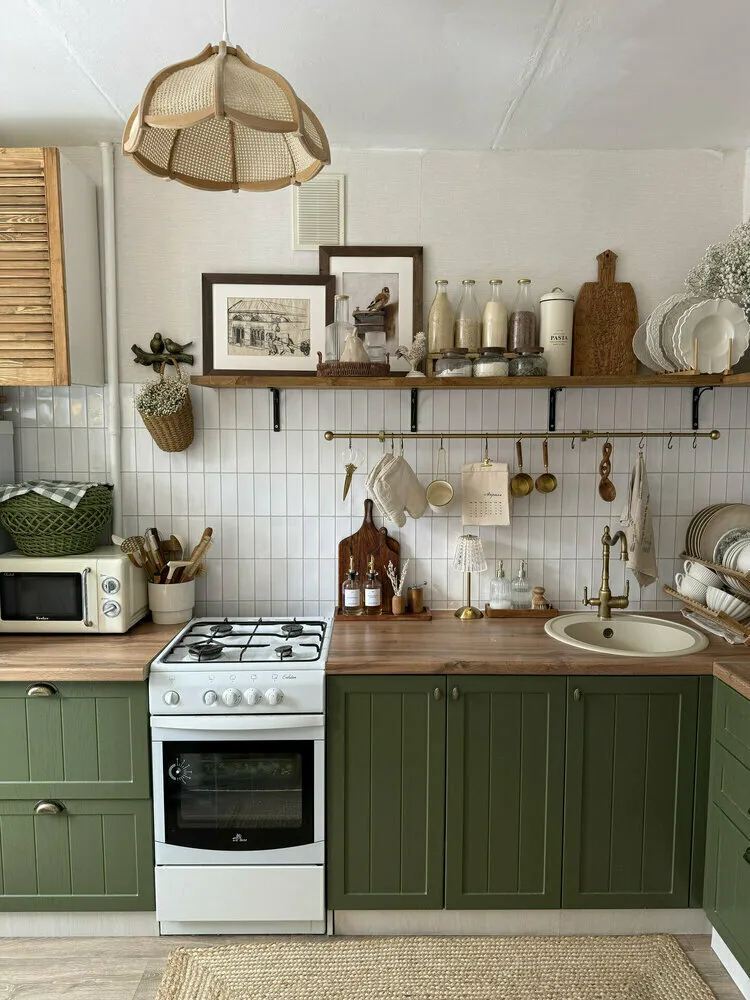 Design by Julia Bobrovskaia
Design by Julia BobrovskaiaPrepare documents in advance
Clear agreements are the basis of peace of mind. Don’t start work until you’ve signed a contract with the crew, confirmed the estimate, and documented the conditions. The contract should include timelines, stages, payment method, penalties for delays, and a list of materials.
If a reconfiguration is planned, check whether it requires approval. Also, find out in advance how noise-related work is approved in your building or housing cooperative to avoid complaints and repair blockage. It’s better to review the estimate with an independent expert: they often forget to include some work, and then add it later.
Don't cut corners on safety
Investments in safety rarely seem like a priority, but they save from disasters. Protect yourself from the start, not after the fact:
- install leak sensors with automatic water shutoff
- install voltage stabilizers and RCDs
- use cables of the appropriate cross-section and fire resistance
- if there are children, plan outlet protection and sharp corner guards
You can also insure the apartment against renovation risks: some policies cover damage to neighbors, finishing damage, and flooding.
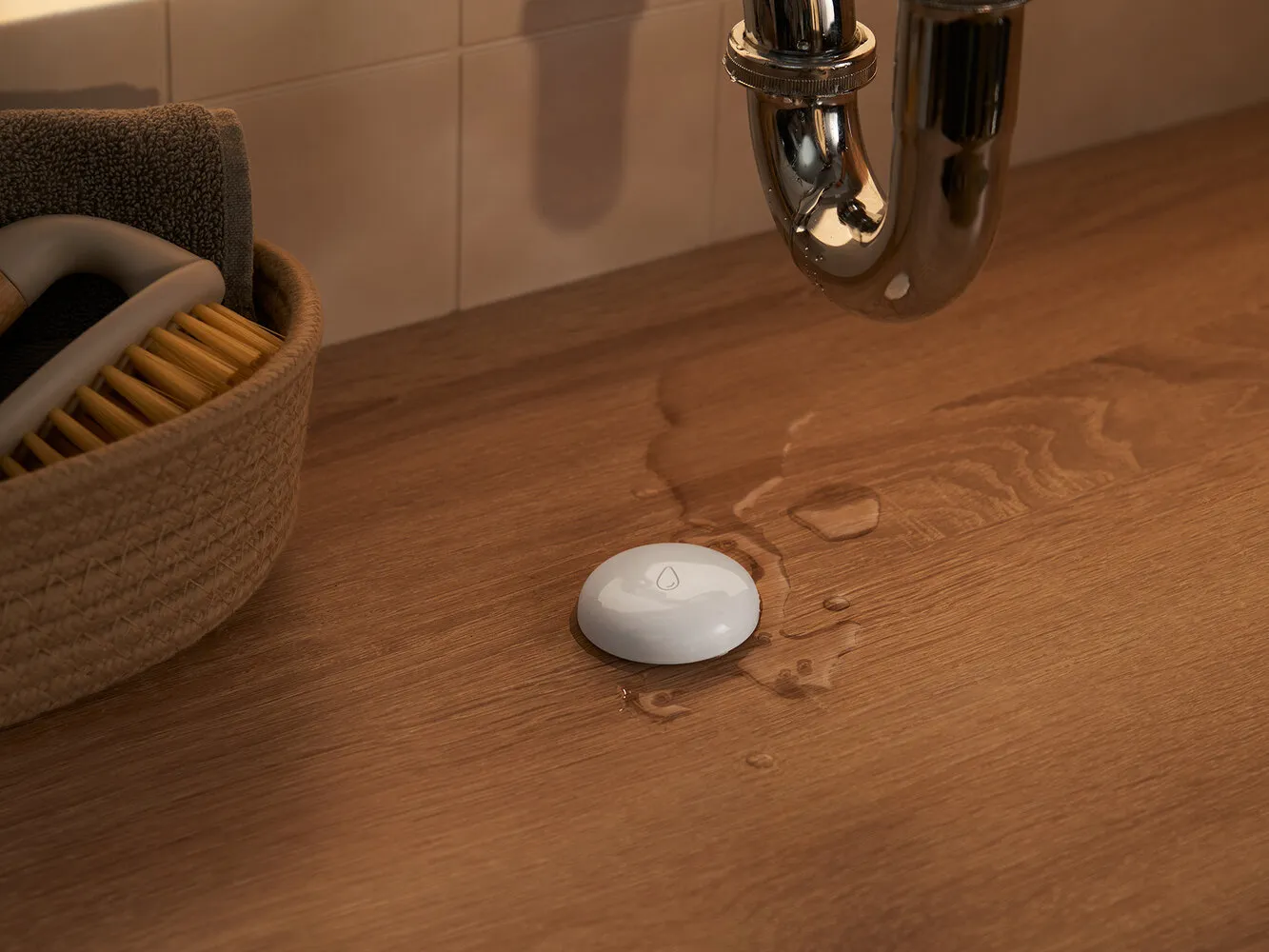
Do a final inspection using a checklist
Before signing the work acceptance act or moving into the apartment, conduct an inspection using a checklist. Alice AI can also help with this. For example, you could write to her: “You are an expert in the field of renovation. Create a checklist for accepting works in an apartment: a capital repair was done in a secondary apartment. Describe in detail by types of work, what to pay attention to, and how to check the quality of completed work. Make a summary table.”
Check:
- all outlets and switches (turn on a lamp or charge a device)
- plumbing, taps, and seams (seal test)
- ventilation operation (place a cloth)
- quality of finishing (corners, joints, painting)
- door, lock, and window closure
If you're unsure, invite an independent expert for the inspection. It’s cheap but can prevent costly rework. Signing the acceptance act = full responsibility for everything you missed.
Chaos in renovation doesn't begin on its own: it arises where there's no structure. Break tasks into stages, document the important details, use digital tools, and don’t be afraid to ask for help. Then even the most complex renovation won't turn into a nervous breakdown but will become a step toward a new, beautiful and comfortable space.
More articles:
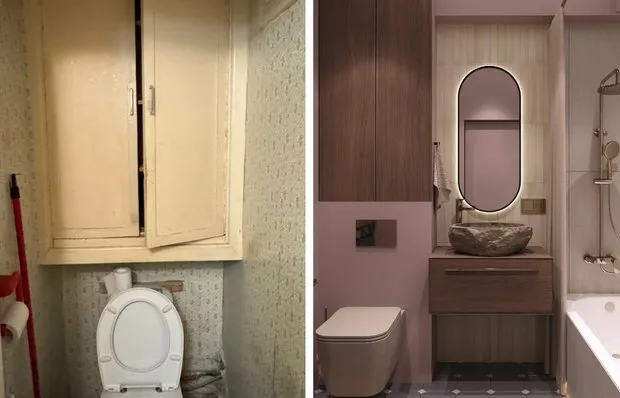 Before and After: How a 3 sqm Bathroom Was Transformed Into a Relaxation Zone
Before and After: How a 3 sqm Bathroom Was Transformed Into a Relaxation Zone How to Style an 8 m² Entrance Hall in a Secondary Apartment to Make It Functional and Stylish
How to Style an 8 m² Entrance Hall in a Secondary Apartment to Make It Functional and Stylish Repair in a Standard Two-Room Apartment: 5 Tips from a Transformed Brezhnev-era Flat Worth Noting
Repair in a Standard Two-Room Apartment: 5 Tips from a Transformed Brezhnev-era Flat Worth Noting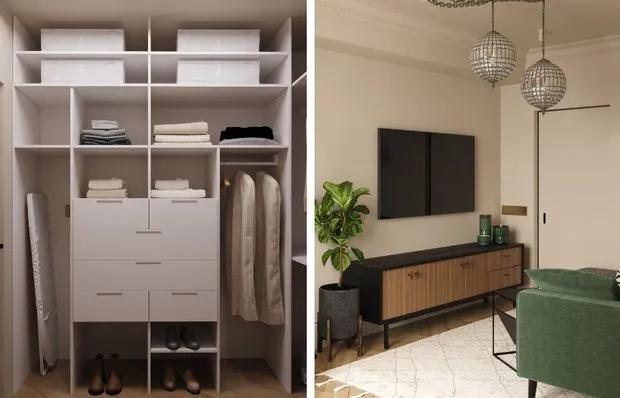 How to Solve Storage Issues in a Small Brezhnev-Era Apartment (51 m²): 7 Ideas
How to Solve Storage Issues in a Small Brezhnev-Era Apartment (51 m²): 7 Ideas Bright Kitchen with Emerald Apron in 69 m² Trash Apartment
Bright Kitchen with Emerald Apron in 69 m² Trash Apartment How to Create an Effortless 3 m² Bathroom with Green Ceiling and Marble Tile
How to Create an Effortless 3 m² Bathroom with Green Ceiling and Marble Tile 6 Tips We Spotted in a Stylish 69 m² Apartment
6 Tips We Spotted in a Stylish 69 m² Apartment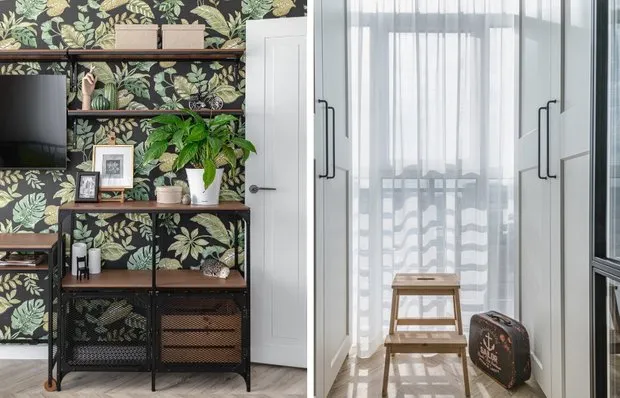 How They Organized Storage in a 69 m² Trash Space: 5 Ideas You Can Replicate Too
How They Organized Storage in a 69 m² Trash Space: 5 Ideas You Can Replicate Too